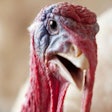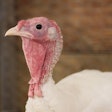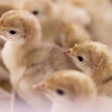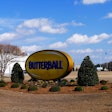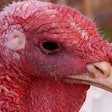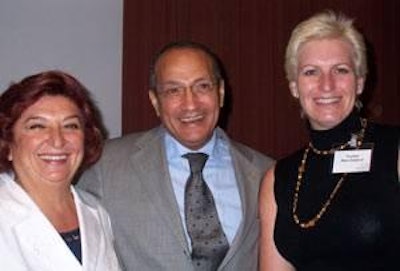
The latest International Turkey Symposium, held in Berlin in June, was ably and efficiently organised once again by Professor Hafez and his team from the Free University in Berlin, on behalf of the World's Poultry Science Association Working Group 10 (Turkeys). More than 180 delegates from 25 countries participated at this year's conference, the fourth in the series.
Forty papers were presented covering the turkey industry in various countries, genetics, nutrition, welfare, husbandry and health.
Turkey production prospects vary
The first three presentations described the history and present state of the turkey industries in France, Turkey and Hungary.
French industry stable
Pascal Thiery (Primex SAS) explained that the industry in France was begun in the 1960s by Mr Guyomarc'h and that the business grew rapidly. Production peaked at 761,000 tonnes in 2000 and has since fallen at a rate of around 6% annually to hit 515,000t in 2006. The fall was attributed to a decline in exports, rising imports and problems in recruiting new farmers.
The number of breeders has declined by one-third since 2000 to around 1.2 million today. The market is dominated by medium-sized breeds. Average performance nowadays is for females to reach slaughter weight of 6kg in 84 days, and males 11-12kg in 112 days, at a feed conversion of 2.35-2.40. The statistics, shown in Table 1, indicate how average carcass weight has increased over time.
When asked about the future of the industry, Mr Thiery expects the size of the industry to remain stable in future, providing that anticoccidials are not withdrawn. If they are, he expects a crisis in the industry.
|
Table 1: Evolution of the turkey industry in France (1980-2006) |
||||
|
Year |
Total production |
Turkey as % of |
Turkey as % of |
Average carcass |
|
1980 |
203 |
18 |
4.2 |
4.44 |
|
1985 |
249 |
20 |
4.9 |
4.73 |
|
1990 |
439 |
26 |
8.0 |
5.44 |
|
1995 |
656 |
31 |
10.4 |
5.83 |
|
2000 |
761 |
34 |
11.8 |
6.50 |
|
2005 |
545 |
28 |
8.8 |
6.59 |
|
2006 |
515 |
29 |
N/A |
6.89 |
| Note: N/A=not yet available; Source: Thiery 2007 | ||||
Avian flu disastrous for Turkey
Dr Sabri Eratalar of Ankara University described the industry's development in Turkey, which began with the rearing in bronze birds. In the 1950s, the first Government Production Farm (GPF) was set up with fully integrated production of broilers and turkeys. The main market for turkeys was for New Year's Eve.
In 1995, Bolu was set up as the first commercial turkey production facility, and another company was established in Izmir just a few months later. Supported by a strong demand for low-fat food, turkey meat production rose dramatically from 2646t in 1995 to 23,265t in 2000.
Since then, three GPFs closed but the new commercial farms and processing plants were both efficient and well equipped. High levels of bird performance were achieved and turkey meat production and consumption continued to grow reaching 53,530t in 2005.
And then disaster came in the form of avian influenza. Production in 2006 fell to 47,100t, and five of the twelve commercial companies went out of business, as did the last remaining turkey hatchery.
In response to a question, Mr Eratalar said that he sees a good future for turkey production in his country because of the still-strong demand for healthy, low-fat food.
Good news from Hungary
Dr Janos Paljak from Gallicoop gave an overview of the Hungarian turkey industry, which is in a better state, and where prospects for further growth are good.
With a traditionally strong broiler industry, commercial turkey production started in the 1980s. Table 2 shows how both output and domestic consumption have shown strong growth since. Poultrymeat production is regulated by the Hungarian Poultry Product Board, to which all producers and processors are members, with a special branch for turkey producers. Gallicoop is the only vertically integrated company in turkey production with its activities including breeding through to slaughter and including feed mills.
Dr Paljak stated that production costs continue to rise in his country, and the decision of some retailers to turn to cheaper imported meat is putting local producers under ever-increasing pressure.
|
Table 2: Growth in turkey meat production |
||
|
Year |
Total Production ('000t) |
Consumption (kg/person) |
|
1985 |
23 |
0.8 |
|
1990 |
59 |
2.0 |
|
1995 |
48 |
2.4 |
|
2000 |
105 |
6.5 |
|
2005 |
118 |
7.5 |
|
2006 |
127 |
7.5 |
|
Source: Paljak (2007) from Hungarian Council for Poultry Production |
||
News on nutrition
Feed accounts for 60-70% of the total cost of rearing turkeys for meat and with feed ingredient prices rising, it is becoming ever more important to provide the birds with optimum nutrition at each stage.
Focus on economics
Dr Hermann Klein-Hessling of International Poultry Consulting Services tackled the topic of adjusting feed protein and feeding programmes for optimum performance and profitability of growing turkeys by reviewing a series of trials.
From one report, it emerged that feeding turkeys less than 100% of their requirement for protein or amino acids had an adverse effect on both growth and breast meat yield. Fast growing birds respond well to increases in protein and/or amino acids, but increases are more effective in some growing phases than others: early bodyweight advantage may be maintained to the end of finishing, although the author thought this could have been a response to higher metabolisable energy rather than protein. He suggested that the best approach is to consider total nutrient intake during each phase of growth. Because turkeys respond to increased protein intake during the last third of rearing in terms of increased breast tissue growth, this is the critical period for increasing protein and amino acid intakes. This type of programme has the added advantages of reducing mortality and wet litter problems.
In his conclusion, Dr Klein-Hessling emphasised the importance of focussing not on physical performance but on economics in formulating feeds and feeding programmes for turkeys.
Adapting feeding for females
Responses of heavy female turkeys to changing feed strategies' was the topic taken by Dr Andreas Lemme of Degussa. Most feeding programmes are designed to meet the needs of male birds, leading to sub-optimal performance by the females.
Based on two experiments, he concluded that amino acids in phases 2 and 3 could be reduced by 10% for females without adversely affecting overall performance. Furthermore, the phase 5 feed can be replaced by that for phase 6 during the last week before slaughter (based on a standard 110-day rearing period).
Blackhead investigated
Among several diseases and disorders discussed at the conference, blackhead (histomoniasis) received attention from several presenters. Blackhead is caused by a protozoan parasite, Histomonas meleagridis, which is found in a number of bird species but causes severe symptoms and mortality in turkeys. The disease was well controlled in the past by dimetridazole and/or nifursol. However, these feed additives were banned in the European Union in 1995 and 2003, respectively, and the disease has consequently re-emerged.
Unusual case report
Christina Popp of the Poultry Health Service in Baden-Württemberg reported an unusual case of blackhead in two houses of turkeys aged 7-8 weeks on one farm. The unusual characteristic of the outbreak was that only the males were affected and despite attempted treatments, they had to be euthanised. Each house contained birds of both sexes, separated by a simple wire fence, yet the females had no symptoms of the disease, and were slaughtered as planned at 16 weeks of age.
Blackhead has not returned to the farm in the meantime so the origin and progression of the disease remains a mystery. During the discussion session, Ms Popp emphasised that prevention is the only way to control this disease: closed houses, tight biosecurity, keeping litter dry, coccidiosis control and de-worming.
New theory on source of infection
Following a period of intense study to look for new methods of blackhead control, Dr Larry McDougald of the University of Georgia proposed an amended life cycle of Histomonas. Turkeys were thought to become infected only after ingesting the Histomonas eggs from an intermediate host, a worm belonging to the genus Heterakis. However, Dr McDougald has proposed a change to the life cycle that includes horizontal transmission between turkeys. This is based on the fact that it is rare to find worms in turkey houses. He suggests that infection in turkeys originates in chickens, following ingestion of the worm eggs by turkeys. The infection becomes established in the caeca and liver and the bird becomes ill, passing the infection to other turkeys through contact with liquid faeces.
Plant-based control
The ban on anti-blackhead agents in the European Union prompted a determined search for effective alternative products. Dr Wil Landman from Animal Health Service (GD) in the Netherlands reported his studies into the efficacy of a number of commercially available herbal anti-blackhead products. The results were disappointing: in spite of showing activity in vitro, none of the products tested showed significant efficacy in vivo. Dr Landman was unable to explain why mortality was so high in his experiment up to 100% or why morbidity was observed even with the dimetridazole positive control treatment.
Genetic effects confirmed
It is known that the various genetic lines of turkeys show different susceptibility to blackhead. Professor Hafez reported work done at his own institute at the Free University in Berlin, which showed that the mortality rate from blackhead was higher in wild Canadian turkeys than in the commercial lines, Kelly Bronze and BUT Big-6.
Blackhead in the future
From the discussion following the session, it emerged that vaccination against blackhead remains a distant hope. Some participants expressed doubts on the new theory of the life cycle of infection, believing the worm eggs to be the only source. The eggs, larvae and young worms are too small to be seen with the naked eye, and so could also be present in the feed. Professor Hafez emphasised that there was no evidence that feed was involved in disease transmission.




